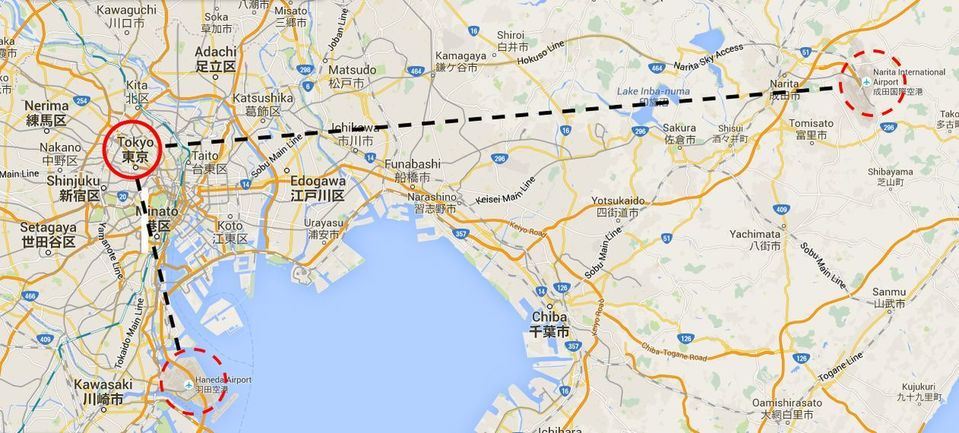Heart set on a trip to Japan? Qantas is adding twice as many reasons to hop aboard a red-tailed roo, supercharging its Tokyo connections from November 26, with extra flights from Sydney, Melbourne and Brisbane all primed for take-off.
On the departures board are double daily flights from Sydney to Tokyo-Haneda – up from the single daily at present, as well as a jump from four to seven flights per week from Melbourne and a boost from thrice-weekly to daily out of Brisbane.
The schedule overhaul is well-timed for travellers hoping to jet off for the Japanese ski season, which really ramps up from late-December, along with the country’s famed hot springs and little-known sub-tropical islands off Tokyo.
However, it’s not all good news for travellers. Both Melbourne and Brisbane will now be touching down at the less-convenient Narita Airport instead of Haneda, meaning an additional 50 kilometre commute from the airport to downtown Tokyo.

Haneda Airport is 15kms from downtown Tokyo, versus 65kms from Narita.
Qantas’ Narita Lounge was an early casualty of the pandemic, with its doors shuttered in 2020 before closing for good in January 2022. Business class passengers, Gold and Platinum frequent flyers and Qantas Club members will now be directed to the Oneworld partner Japan Airlines lounges.
That leaves Sydney the sole connection to Haneda Airport. With no dedicated Qantas lounge in Haneda either, lounge worthy travellers can instead look forward to visiting Japan Airlines’ first class and Sakura business class lounges.
Of course, there is another benefit for Sydneysiders touching down in Haneda, in the form of the freshly-opened rooftop hot springs at Haneda Airport Garden hotel and shopping complex, linked directly to the terminal.
The Japanese schedule boost is part of a significant jumpstart to Qantas’ international network, including additional flights jetting off to the United States and Hong Kong, as well as the return of Sydney-Shanghai after a three year hiatus.
A Qantas statement says the network changes will see the Group’s international capacity grow to around 100 per cent of pre-COVID levels by March 2024.
